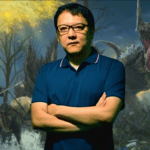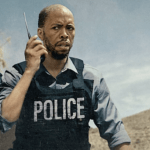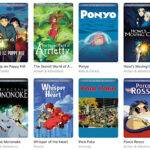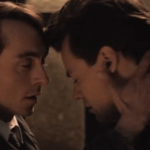Table of Contents
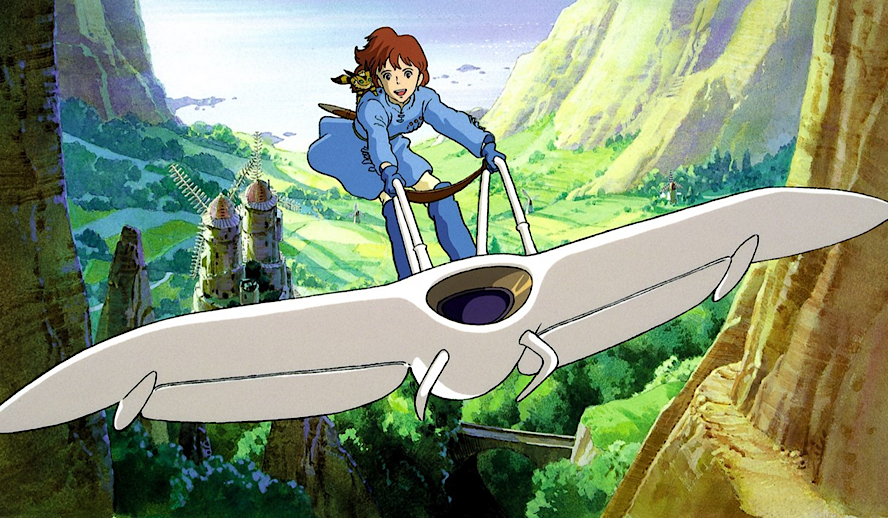
Photo: ‘Nausicaa of the Valley of the Wind’/Toel Company
Insect Apocalypse
We haven’t seen a quarter of known bee species since the 1990s. Western monarch butterfly populations have dropped by ~97% between the 1980s and mid-2010s. Ants, bees, butterflies, grasshoppers, fireflies and other land-dwelling insects have been suffering population drops of about 9 per cent per decade. Many scientists believe that half of the world’s insects have disappeared since 1970, with 400,000 of the world’s 1 million species in decline. These are the kind of headlines we see on a regular basis relating to insect life on our planet. Experts believe that if insects were to disappear, most animals–including humans–would die out in a matter of months.
Related article: Record Breaker: Anime ‘Demon Slayer’ Beats ‘Spirited Away’ as The Biggest Japanese Box-Office Ever
Related article: 3 Reasons Why ‘Avatar: The Last Airbender’ is Worth Revisiting Right Now
As pollinators and as the basis of most food pyramids, insects are irreplaceable. Yet it seems to be nearly impossible to get our society on board with respecting these humble creatures. While there seems to be an evolving understanding that abusing animals is wrong, the casual killing of insects continues to be normalized in the media. The U.S. continues to allow use of neonicotinoids, a type of pesticide now banned in Europe that has been proven to be extremely detrimental to honeybees, a bellwether species of planetary biodiversity. Neonicotinoids are chemically similar to nicotine and they work by destroying an insect’s central nervous system. The obsession with finding new ways to wreak havoc on insects seems almost pathologically barbaric–perhaps since insects are so biologically dissimilar to humans, it is harder to empathize with them. We fear most that which we do not understand. By attacking out of fear, we ultimately only hurt ourselves.
A Princess of Peace
Hayao Miyazaki, the pioneering animator behind the beloved Studio Ghibli, seized upon these themes for his breakout masterpiece ‘Nausicaä of the Valley of the Wind’. The film takes place in a post-apocalyptic world ravaged by clouds of poisonous spores, a world toxic to humans but where giant mutant insects thrive. Despite the fact that their ancestors’ shortsighted destructive practices have nearly driven humanity to extinction, the societies in ‘Nausicaä’ continue to wage war against the insects, particularly a species called the Ohm, which are city-sized trilobite-like creatures that travel in massive herds and show signs of emotional intelligence. Centuries after technology-fueled nuclear Armageddon, petty warrior kingdoms reduced to feudalistic societies jockey for control of a weapon they believe will destroy the jungle of toxic spores and allow them to reclaim the planet for humankind. Only Nausicaä, a princess from the peaceful Valley of the Wind, stands in their way.
Subscribe to Hollywood Insider’s YouTube Channel, by clicking here.
It’s shocking to think that Miyazaki developed this prescient story nearly 40 years ago, with the manga releasing in 1982 and the film releasing in 1984. Its themes of environmental destruction are only all the more relevant now, as we continue to subjugate our planet and push the natural world to the brink. Also remarkably relevant is the characterization of the feminist heroine Nausicaä. Unlike the fear-driven warmongers from the neighboring kingdoms of Pejite and Tolmekia, Nausicaä uses science and empathy rather than fear and violence to drive her decision-making. She attempts to understand the toxic jungle and the Ohm rather than conquer them, finding out that the violence that is being proffered as the only solution in fact only stands to worsen the problem. She bravely stands up to the world leaders attempting to resurrect a giant robot to shoot lasers into the swarm of Ohm, making both emotional and logical appeals. She’s like Greta Thunberg, if Greta Thunberg was also capable of taking down a cadre of armored soldiers Arya Stark-style. She even has her own jet-assisted glider, the in-world equivalent of a zero-emissions yacht.
‘Nausicaa of the Valley of the Wind’ – Live and Let Live
What’s interesting about ‘Nausicaä’ is how it challenges our preconceptions of what environmentalism is. Miyazaki’s initial inspiration for the story was an environmental disaster in Japan’s Minamata Bay, which saw fish adapt after the habitat was poisoned by wastewater contaminated with methylmercury. Nausicaä continues to fight to protect a habitat that is far removed from its original state, recognizing that nature is working to slowly return to a state of equilibrium. She advocates for a policy of non-intervention.
Related article: The Power of Positivity: Ikorodu Bois + Chris Hemsworth + Russo Brothers + Sam Hargrave
Limited Time Offer – FREE Subscription to Hollywood Insider
Entrepreneurial proposals to save the planet often involve moonshot proposals of how humans might reverse environmental degradation through elaborate manipulation of the environment. How often has a new species been introduced to an area to combat a perceived environmental issue, only to trigger another unforeseen disaster? At what point do we accept that doing less, in a holistic sense, rather than more, may be a better solution? The film also challenges the anthropomorphism that accompanies some environmental efforts. If we were not the most powerful species on a planet covered with tourist destinations and a wide variety of animals to eat and admire, would we still fight to maintain it? ‘Nausicaä’ suggests that even if we render Earth an unlivable ‘wasteland’, that does not absolve us from the responsibility to live and let live.
Miyazaki, Environmental Empath
Miyazaki’s film presents a persuasive case for empathy for insects, as well as empathy for mutated beings. Perhaps Japan’s experience as the only country ever attacked by atomic weapons is at the root of this empathy–the World War II bombings of Hiroshima and Nagasaki led to indiscriminate death as well as long term health effects caused by radiation in survivors. There is a soulful recognition in ‘Nausicaä’ that there is something wrong with wiping out another living thing simply due to its inconvenience. American films constantly traffic in this kind of senseless slaughter, desensitizing people to it. Making insects in particular into the fodder for terror and bullets is a constant trope, from ‘King Kong’ to ‘Starship Troopers’ to ‘Love and Monsters’. Even the first attempt to localize ‘Nausicaä’ for American audiences missed the point; released as ‘Warriors of the Wind’, the disastrous dub cut the environmental themes and presented the peaceful Ohm as aggressors. In most movies, the solution to an aggravated swarm of insects attacking humans is violence. Miyazaki’s influence pulls Japanese Cinema in the direction of peace.
Related article: Hollywood Insider’s CEO Pritan Ambroase: “The Importance of Venice Film Festival as the Protector of Cinema”
Related article: The Masters of Cinema Archives: Hollywood Insider Pays Tribute to ‘La Vie En Rose’, Exclusive Interview with Director Olivier Dahan
Princess Nausicaä acknowledges the human impact on the environment and instead attempts to deescalate by removing the threat and projecting harmonious energy. ‘Nausicaä’ is a transformative film, framing the conversation around conservation as one of fear versus understanding. Like Frank Herbert’s ‘Dune’ series, it presents a planet as akin to a living thing, with rhythms and cycles that must be respected. It also shares traits with Tolkien’s ‘Lord of the Rings’–it tells a story of an existential fight for survival against the forces of greed and delusion. It cemented Hayao Miyazaki as one of the most compassionate storytellers of all time, resulting in follow-up classics like ‘Castle in the Sky’, ‘Princess Mononoke’, and ‘Spirited Away’. Thankfully, Miyazaki continues to make films, sending messages of hope in challenging times and presenting themes of peace and understanding to the budding environmentalists of tomorrow.
‘Nausicaä of the Valley of the Wind’ is currently streaming on HBOMax.
Cast (English dub): Alison Lohman, Shia LaBeouf, Uma Thurman, Edward James Olmos, Patrick Stewart, Mark Hamill
Cinematography: Yasuhiro Shimizu | Kôji Shiragami | Yukitomo Shudo | Mamoru Sugiura
Editors: Naoki Kaneko | Tomoko Kida | Shôji Sakai
Director: Hayao Miyazaki | Writer: Hayao Miyazaki | Producer: Isao Takahata
An excerpt from the love letter: Hollywood Insider’s CEO/editor-in-chief Pritan Ambroase affirms, “Hollywood Insider fully supports the much-needed Black Lives Matter movement. We are actively, physically and digitally a part of this global movement. We will continue reporting on this major issue of police brutality and legal murders of Black people to hold the system accountable. We will continue reporting on this major issue with kindness and respect to all Black people, as each and every one of them are seen and heard. Just a reminder, that the Black Lives Matter movement is about more than just police brutality and extends into banking, housing, education, medical, infrastructure, etc. We have the space and time for all your stories. We believe in peaceful/non-violent protests and I would like to request the rest of media to focus on 95% of the protests that are peaceful and working effectively with positive changes happening daily. Media has a responsibility to better the world and Hollywood Insider will continue to do so.”
Ways to support Black Lives Matter Movement to end systemic racism
More Interesting Stories From Hollywood Insider
– Want GUARANTEED SUCCESS? Remove these ten words from your vocabulary| Transform your life INSTANTLY
– Compilation: All James Bond 007 Opening Sequences From 1962 Sean Connery to Daniel Craig
– Do you know the hidden messages in ‘Call Me By Your Name’? Find out behind the scenes facts in the full commentary and In-depth analysis of the cinematic masterpiece
– A Tribute To The Academy Awards: All Best Actor/Actress Speeches From The Beginning Of Oscars 1929-2019 | From Rami Malek, Leonardo DiCaprio To Denzel Washington, Halle Berry & Beyond | From Olivia Colman, Meryl Streep To Bette Davis & Beyond
– In the 32nd Year Of His Career, Keanu Reeves’ Face Continues To Reign After Launching Movies Earning Over $4.3 Billion In Total – “John Wick”, “Toy Story 4”, “Matrix”, And Many More
Nausicaa of the Valley of the Wind, Nausicaa of the Valley of the Wind, Nausicaa of the Valley of the Wind, Nausicaa of the Valley of the Wind, Nausicaa of the Valley of the Wind, Nausicaa of the Valley of the Wind, Nausicaa of the Valley of the Wind, Nausicaa of the Valley of the Wind, Nausicaa of the Valley of the Wind, Nausicaa of the Valley of the Wind, Nausicaa of the Valley of the Wind, Nausicaa of the Valley of the Wind, Nausicaa of the Valley of the Wind, Nausicaa of the Valley of the Wind, Nausicaa of the Valley of the Wind, Nausicaa of the Valley of the Wind, Nausicaa of the Valley of the Wind, Nausicaa of the Valley of the Wind, Nausicaa of the Valley of the Wind, Nausicaa of the Valley of the Wind, Nausicaa of the Valley of the Wind


